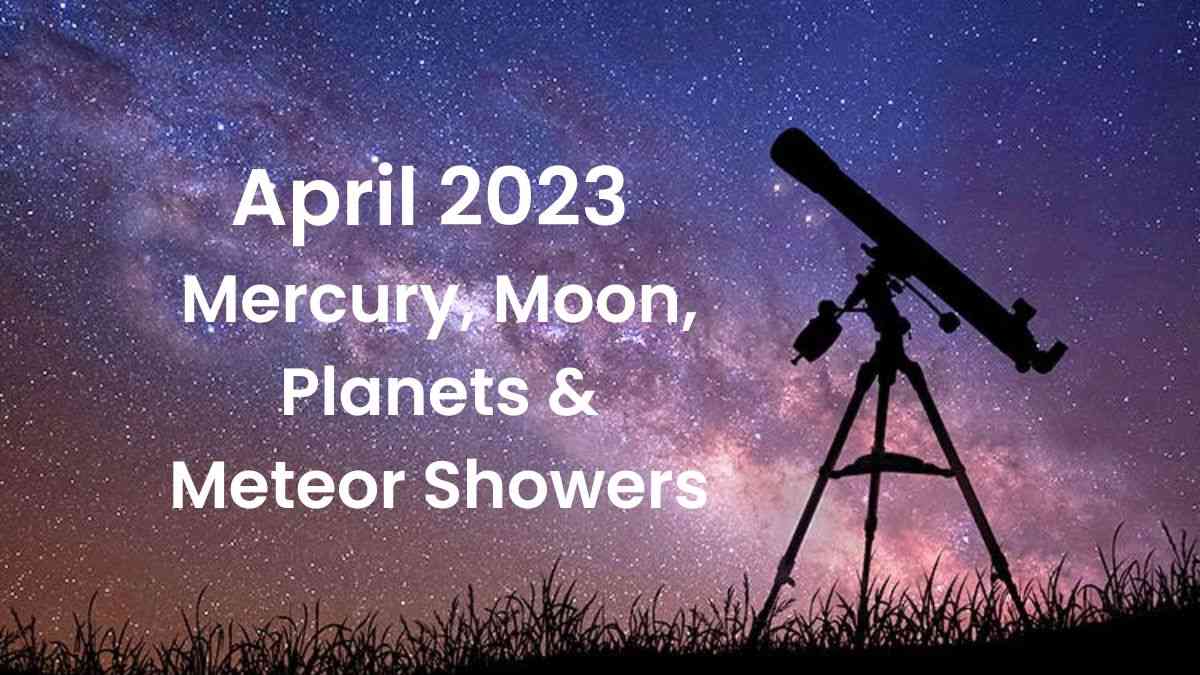NASA’s sky observation event in April 2023: Recently, the National Aeronautics and Space Administration (NASA) shared about upcoming astronomical events this month. Sky watchers will experience a number of major celestial events involving mercury, the moon, planets and meteors visible in the night sky, including. So let’s take a detailed look at the April 2023 skywatching highlights shared by NASA.
🔭 What’s in the night sky this April?
The moon will combine beautifully with several planets, while viewing conditions could be ideal for the Lyrid meteor shower. Other sky observing tips: pic.twitter.com/6TdJbIMJUx
– NASA (@NASA)
March 31, 2023
NASA April 2023 Skywatching Highlights: Mercury, Moon, Planets, and Meteorites!
According to the chronology shared by NASA, you should be able to see Mercury after sunset earlier this month. Then you can also see the moon’s visits with the planets. on April 23, 2023, you might even catch a shooting star as the Lyrid meteor reaches its peak:
|
Day |
April 2023 sky viewing event |
|
April 6 |
Full moon |
|
April 11th |
For observers in the Northern Hemisphere, Mercury will be at its highest in the evening sky of the year. Look low to the west just after sunset [Best viewing is April 3-11, as it climbs a little higher each evening.] |
|
Venus lies near the Pleiades star cluster tonight in the west. |
|
|
April 15 to 16 |
Find the moon near Saturn in the east, a few hours before sunrise. |
|
April 20 |
New Moon |
|
April 23 |
The crescent moon will be just 5 degrees above Venus in the west after sunset. |
|
April 23 |
The Lyrid meteor shower will peak this morning. The best viewing time is from midnight to dawn. |
|
April 25 |
The Moon and Mars will pair up tonight, in the west after dark. |
|
April 26 to 27 |
The moon will be in quarter phase, which is a great time to observe with binoculars or a telescope if you have access to them. During this time, you can observe details in craters and mountains on the moon along the day-night line (end point) easily. |
Mercury rises on April 11, 2023

Image source: NASA
On April 11, Mercury will reach its highest degree. The planet will be clearest in the evening sky of the year. Mercury is the smallest and fastest moving planet in our solar system. It has the fastest orbital motion in the solar system. The appearance or glimpse of Mercury will be visible in the Northern Hemisphere during the night of April 3-11.
Venus next to the Pleiades Star Cluster – Time Machine Event on April 11, 2023

Image source: NASA
On April 11, another major celestial event will occur! Skywatchers can see Venus right next to the Pleiades star cluster through binoculars. NASA is claiming this pairing will be like a time machine event by hint “The farther you look into space, the further back you see in time.” This time travel phenomenon would occur because on that night you would see the light leave Venus about 9 minutes earlier, while the light of the Pleiades left those stars about 400 years ago.
Phases of the Moon in April 2023

Image source: NASA
The image above shared by NASA explains the 4 main phases of the moon. The full moon will appear on April 6. The third quarter of the moon will be visible on April 13. The new moon will appear on April 20 and the first quarter on April 27.
Moon and Planetary Couples in April 2023 – Saturn 15th, Venus 23rd, Mars 25th

Image source: NASA
In the second half of April 2023, there will be encounters between the moon and three bright planets in our solar system. On April 15 and 16, you can see the crescent moon rising with Saturn. On the night before April 23, you can watch the slender crescent moon hover just 5 degrees above Venus in the west after sunset. On April 25. the moon makes its way to Mars and will be visible at night in the west.
Lyrid meteor shower on April 23, 2023

Image source: NASA
April 2023 will bring the Lyrid meteor shower. The Lyrid is a moderately intense meteor shower, and under ideal conditions it can produce up to 20 meteors per hour at its peak. The Lyrid meteor shower is named after the constellation Lyra, which was first seen in China about 2,700 years ago. On April 23, the Lyrids will peak at dawn. So you might also see a few shooting stars in the morning before and after the peak.
So, this month will be a happy month for sky watchers as they can catch a few shooting stars on an April morning or also see the moon and planets pairing up in the night sky.
Categories: Optical Illusion
Source: pagasa.edu.vn
